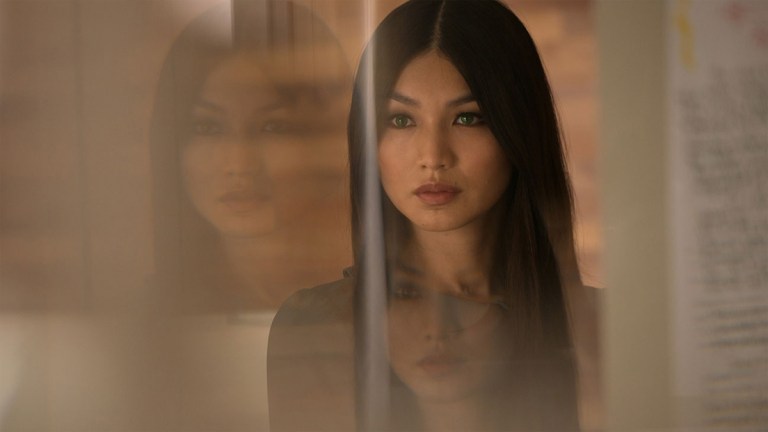Channel 4s Humans is adapted from Lars Lundstroms Swedish Akta Manniskor.
How close are the two dramas, and where do they differ?
Warning: contains plot details forHumansandAkta Manniskorseries one.

Humans:A dot of white light blinks on and shrinks away into a black recess.
The shot pulls back through electronic camera shutters to reveal an unnaturally green eye framed by dark lashes.
The trolley-pusher disregards the ranks of people behind him as if theyre part of the furniture.
He switches off the lights and the rows remain, unmoving in the dark.
One, just one, raises her head to look up through a skylight at the full moon.
Once home, he loads a rifle and prepares for a siege attack.
When we first meet them, the android gang arent presented as fugitives, but as aggressors.
Aside from overly made-up faces, theres initially little to distinguish them from any threatening pack of home invaders.
Hubots are also capable of super-strength feats thatAnita saving Tobys life asideweve not yet seen from Synths.
One memorable scene inReal Humans series one finale shows a Hubot vaulting gymnastically over a car.
Pris inBlade Runner, eat your heart out.
In terms of behavior, illegally modding a non-conscious Hubot seems to give them a kind of autonomy.
A sex toy Hubot modded to show pain by her sadistic owner violently turns on him.
Both feature a character whose marriage breakdown is partly due to his wifes Synth replacing him at home.
Both feature a Synth living undetected as a human police officer investigating Synth-related crime.
Inside those broad story outlines are other, smaller parallels.
Like Laura Hawkins, Inger Engman is a solicitor asked to represent Hubot civil rights.
Even so, there are nuanced differences the two.
The Swedish show features a vicar and her wife, who shelter the Hubots for a time.
Mimi is subject to a sexual assault by a gang of teenage boys.
The Hubot salesman who sells Mimi to the Engmans is a character with his own arc.
By the end of series one, both shows wind up in very different places.
In the Swedish show, several of the main characters die, while their UK counterparts are still living.
Leos story has two major points of difference between the two shows.
ThinkGame Of Thrones/The Sopranoslevels of background nudity.
More shocking than that for English viewers is a murder committed early on inReal Humans.
The true shock comes with the murder of an Alsatian.
Remember the fuss made when a crossbow was merely aimed at a Labrador inBroadchurch?
You simply cant kill a dog on English TV.
The nation wouldnt stand for it.
The UK show is a straightforward episodic drama with thriller elements and lines of philosophical questioning.
The Swedish original, alternatively, also has a real thread of kitsch running through it.
The overall effect is of life inside a dollhouse.
The Hubot Market and supermarket, too, are played much more for satirical laughs than their UK counterparts.
There are adult-sized dollies wearing frilly dresses, Bo Peep curly wigs, and outsized bows.
Theres a display of seventies fancy-dress Hubots disco dancing.
In Hubbies, theres also a derogatory term to describe people who have sexual relationships with Hubots.
An economic system is also growing up to support Hubot intolerance.
Its provocative television, and the questions it provokes are the political areas of power and hegemony.
Tellingly, its Conscious Hubots are termed wild, but refer to themselves as liberated.
The short answer is that theyre both pretty special.
Arguably,Real Humansresolves its first series more satisfyingly than the UK version.
Its therefore a busier, more populated and more closely interwoven series than its UK adaptation so far.
Perhaps its fairest to ask again afterHumansseries two, when therell be a better basis for comparison.
Both certainly have plenty to recommend them.
If you lovedHumans, youll enjoy going back to the source.Have your Swedish cake and eat it.